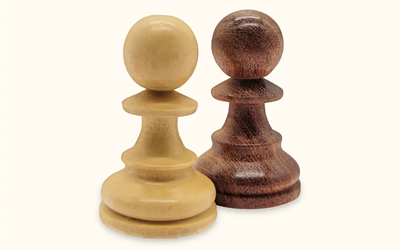
Sadhana@1986
Double knight defense: A breakdown of this blunder.
After e3, b5, Bxb5 there comes this masterpiece of a move: Nh6, a blunder stockfish would say. And rightfully so, as we go from #155 to #63 in just one move! Outstanding! Still, I think it's a great opening for black. I hope this blog can pamper the double knight defense's good name and get more people to try this great opening!I think it's a versatile opening for all time controls. Excellent for bullet, blitz and rapid time controls.
For bullet: you can quickly activate both knights, the bishop and the queen. A good recipe for a complex position full of traps white can fall for. Victory is just around the corner...
As for slower tc's:
I've come to notice that only 3(!) players, apart from myself, use the 'correct' line with white to actually beat this opening. The entirety of the community uses various lines that always end in a deadequal mid- and/or endgame. And it's surprising to say the least. As I would expect the number of players would be higher since we have the 'Watkins Solution'. The 'correct' line that I'm talking about is this chapter from the study: Double knight: Firebat attack.
Why I use this opening
I had to come up with something if I wanted to have a chance for a good performance at the IAF Amsterdam Antichess Event. The 'Watkins Solution' study actually doesn't have a chapter dedicated to the double knight defense I believe. And I already was quite familiar with this opening, so I tried to improve it to win a couple of games with black at the event.
e3 is the most used opening by white in antichess. I read some statistic that over 75% of all games are played with this opening. So for me, to win most of my games with black I am studying an opening that is not used all that much, but very effective against the most overused opening in antichess of all time.
Furthermore, the double knight defense comes with a handful of obscure traps hidden within its position. Traps that even 2200+ players fall for quite frequently.
The opening:
What does this bring us?
As I stated earlier. One can quickly activate 4 major pieces by playing Nf6 or Ne5. Another weapon is Rb8. Many plays by white require black to play Rb8 and this sets up a handful of traps. And require white to play 2 precise moves if he does not want to end up in a losing position
This study covers the most common openings and traps:
Double knight defense's beautiful traps:

This is a common position and all fine for white. But it requires the specific move h3 to keep the advantage. Both the knight and bishop moves shown are common moves played, but losing on the spot. A bit tricky to solve as they require a few intermediates to win for black. Learn these and you are rewarded free wins quite frequently from as high as 2100 players.

Another one you should learn, white thinks he saves his rook from getting out in the open but h3 is losing on the spot. Very difficult one to solve. Learning it move by move is... well... impossible. Although I doubt any player ever plays it perfect after h3. Understand the weakness in this position and you can probably secure victory for at least 90% of your games in this position. Consult the 'Double knight: h3 blunder' chapter from the study for this one.

Here again Rb8 is powerful after Qh5. After Qxh6/Qxf7 you must recapture the queen. Giving white only 1 way to continue: b3. But as we see in bullet, b4 is often chosen followed by Bb2. Instantly losing. Consult the chapter 'Double knight: Qh6, Rb8 trap' to learn this one!
Other things to take into account
Depending on the players rating you can assume what he is going to play. Lower rated players tend to instantly make use of the h6 knight and drop the pawn or queen on g4. Both excellent openings for white as long as white knows how to continue for a move or 10. Higher rated players tend to play an intermediate and give black the opportunity to decide how he wants to continue with his life. What I am trying to say is: statistics show that there are common and uncommon replies. If you want a decent performance in an arena. Study the most common lines and you should be fine.
In bullet, throw everything you know in the trash can and use the element of surprise and try the following:
 Either of these moves by white should be met with Nf6/e5 this opens up the bishop and queen and activates both knights. You can count on your opponent that 1+0 is not enough time to calculate the correct sequence. And you can also count on your opponent that a blunder or 2 might occur.
Either of these moves by white should be met with Nf6/e5 this opens up the bishop and queen and activates both knights. You can count on your opponent that 1+0 is not enough time to calculate the correct sequence. And you can also count on your opponent that a blunder or 2 might occur.
After Nh6, Bxd7, you could try something else than Nxd7, I have never seen someone play it, and it's actually very much playable. Could be an effective element of surprise in bullet tc's.
In conclusion
Consult the study and blog to your heart's consent. I hope it is of help to improve your own play. I recommend studying the traps, so that you don't fall for those anymore.
More blog posts by ZendiScar

IAF Antichess World Championship 2024 date has been determined & more news!
Read all about the 3rd edition of the IAF ACWC 2024 in this blog.
G3: a take on what I despise.
A take on what it's like to play against g3 in antichess.
IAF Antichess World Championship: News & Survey results
In this blog we will discuss survey results and share the latest news about the 3rd edition of this …